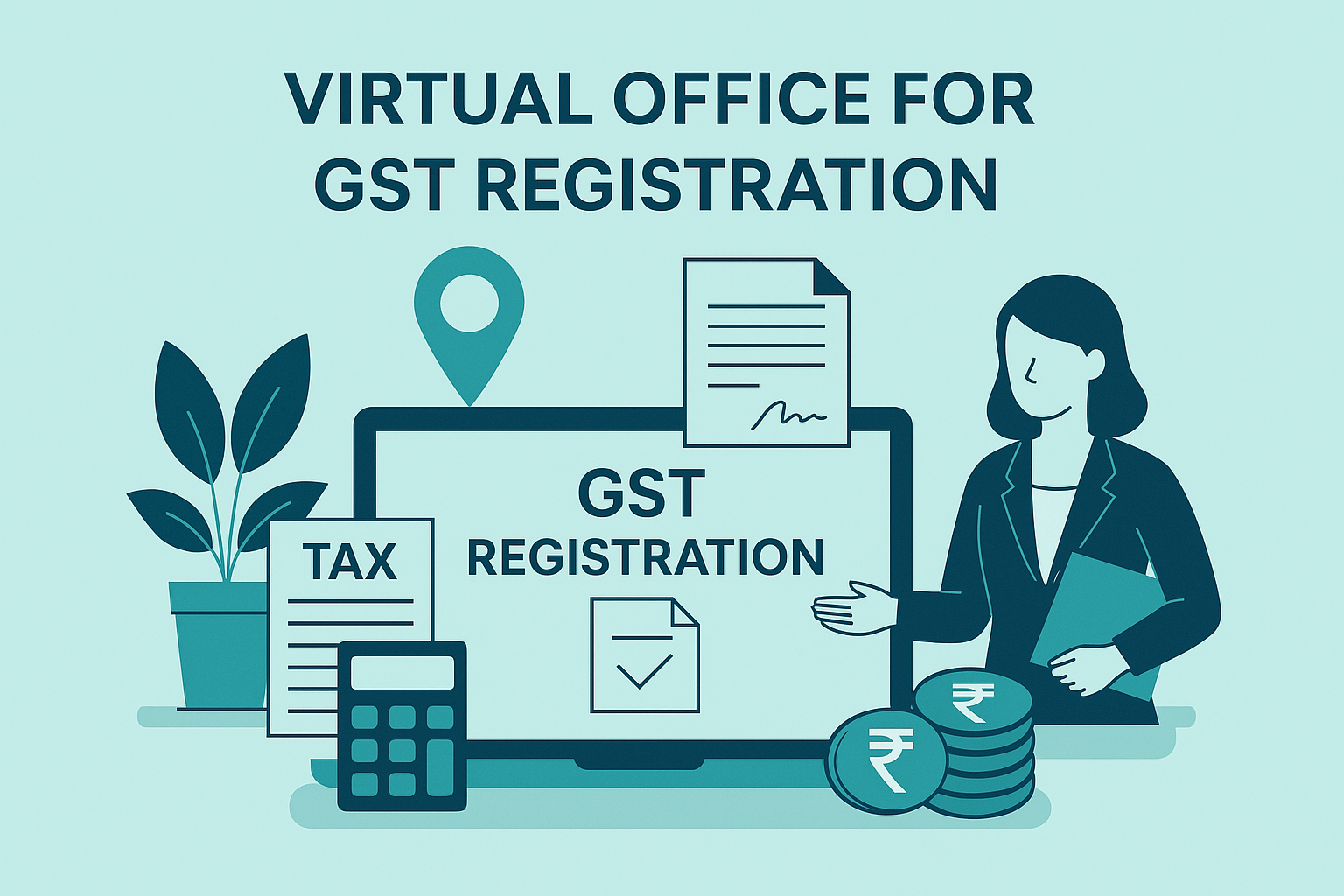
. Virtual office for GST registration: Understand the Legal Validity
Virtual office for GST registration is legally accepted by GST authorities, provided the service provider offers a valid lease agreement and utility bill (such as an electricity bill) for the premises. The GST law does not mandate a physical office with employees for registration; it only requires proof of a place of business. Rule 8 of the CGST Rules, 2017 allows businesses to register using a principal place of business, which can be a shared or virtual office.
As long as your virtual office service provider complies with the GST registration documentation norms, you can use their address as your place of business.
2. Virtual office for GST registration: Identify Your Business Requirement
Virtual office for GST registration should be aligned with your business model. For example:
If you're an eCommerce seller using platforms like Amazon, Flipkart, or Meesho, you need state-wise GST registrations (also known as Additional Places of Business or APOB).
If you're a consultant or freelancer providing services across India, a virtual office allows you to register in different states while operating remotely.
If you're a new business, a virtual office allows you to project a professional image and register without the upfront costs of leasing commercial space.
Clarify whether you need a virtual office as a Principal Place of Business (PPOB) or as an Additional Place of Business (APOB).
3. Virtual office for GST registration: Choose a Reliable Service Provider
Virtual office for GST registration must be set up with a credible provider. The following should be part of your due diligence:
Ensure the provider offers GST-compliant documentation: Rent agreement, No Objection Certificate (NOC), and a recent utility bill.
Verify that the virtual office address is located in a commercial or coworking space, not a residential property.
Confirm whether the provider offers mail handling and signage services if required.
Prefer providers who offer state-wise VPOB services, if you need multiple state registrations.
Always request a sample document set to ensure compliance before making payment.
4. Virtual office for GST registration: Obtain the Documentation
Virtual office for GST registration requires three core documents:
Rent Agreement – A legally executed rental agreement between your business and the space provider.
NOC from Owner – A No Objection Certificate from the owner permitting the use of the premises for GST registration.
Utility Bill – An electricity bill or any other municipal bill issued in the last two months, proving the existence of the premises.
Ensure the address on all documents exactly matches the one you intend to submit in the GST application.
5. Virtual office for GST registration: Apply on GST Portal
Virtual office for GST registration is initiated online through the GST Portal follow these steps:
Visit the portal and go to Services > Registration > New Registration.
Fill in your legal business name, PAN, mobile number, and email.
Select the relevant state and district for which you’re applying using the virtual office address.
You’ll receive an OTP on both mobile and email to verify your application.
Upon verification, you'll receive a Temporary Reference Number (TRN) to complete the rest of the application.
6. Virtual office for GST registration: Upload Required Documents
Virtual office for GST registration necessitates submission of the following documents along with your application:
PAN of the business
Proof of business constitution (e.g., Partnership Deed, Incorporation Certificate)
Photographs of proprietors/partners/directors
Authorized signatory documents (e.g., Aadhaar, PAN, and authorization letter)
Address proof (i.e., rent agreement, NOC, and utility bill from the virtual office provider)
Ensure all documents are clearly scanned, legible, and within the file size limits specified by the GST portal.
7. Virtual office for GST registration: Await Officer Verification
Virtual office for GST registration applications may trigger physical verification if the jurisdictional GST officer deems it necessary. However, in most cases, if documents are in order, approval is granted within 7 working days.
If physical verification is required:
Your virtual office provider should be informed and prepared to guide or host the officer.
Some providers offer support during verification, such as signage installation and reception assistance.
You may also receive queries or notices (Form GST REG-03), which must be responded to within 7 working days.
8. Virtual office for GST registration: Receive GSTIN and Download Certificate
Virtual office for GST registration process concludes with the allotment of a GSTIN (Goods and Services Tax Identification Number). Once approved, you can:
Download the GST registration certificate (Form GST REG-06) from the portal.
Start invoicing with the newly acquired GSTIN.
Update marketplaces or clients with the new GST number, especially if you’re an eCommerce seller.
Your GSTIN must be mentioned on all invoices, business correspondence, and displayed at the virtual office premises (if required by law).
9. Virtual office for GST registration: Stay Compliant Post Registration
Virtual office for GST registration is not a one-time process; it requires ongoing compliance. Make sure to:
File GST returns (GSTR-1, GSTR-3B, etc.) regularly based on your registration type.
Keep a record of transactions linked to each GSTIN if operating in multiple states.
Ensure that your virtual office provider continues to offer uninterrupted address usage and mail handling (if opted).













